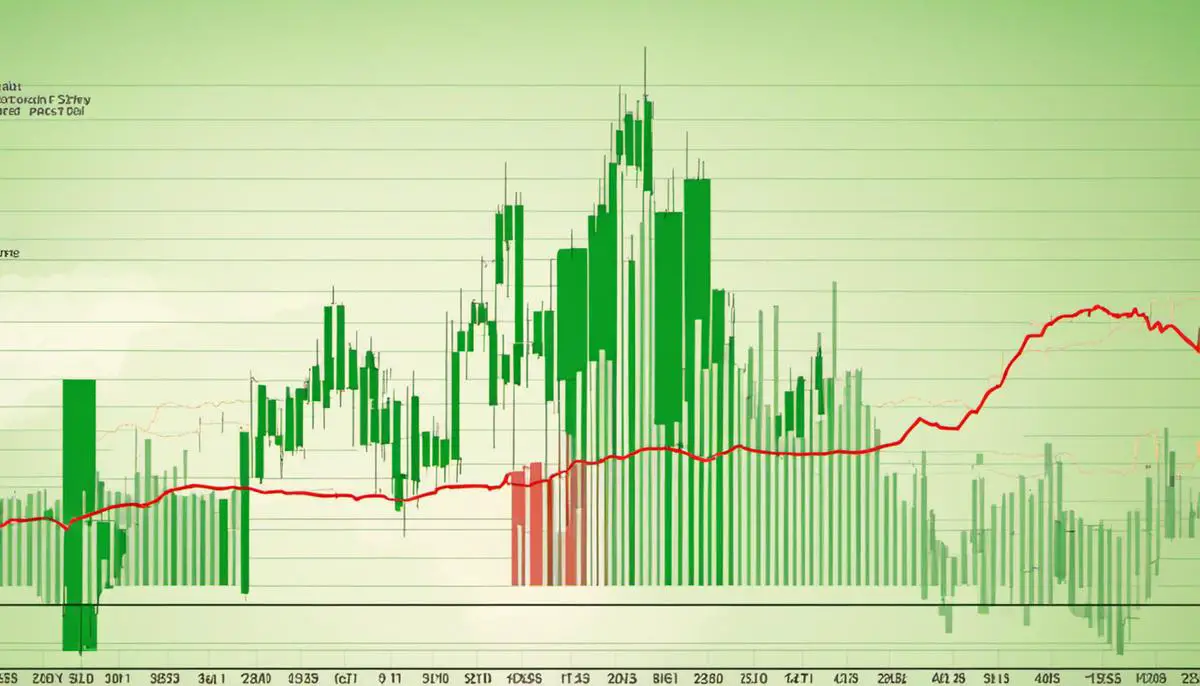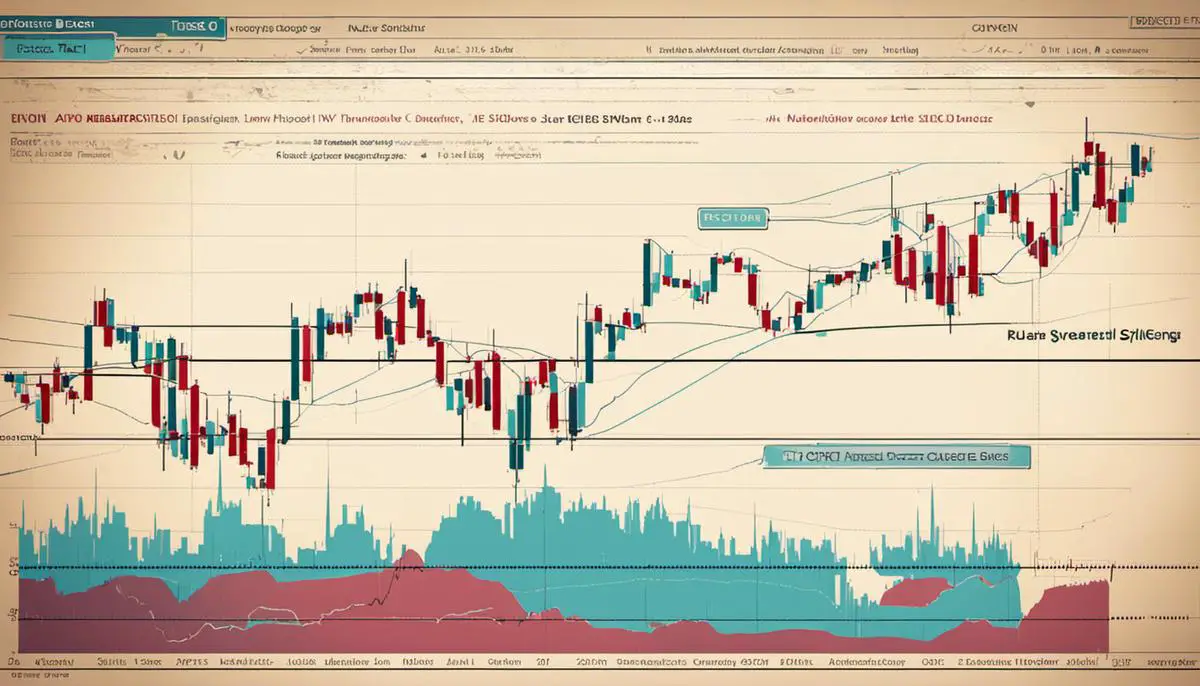In the intricate world of stock market trading, the ability to read and interpret chart patterns can be a powerful tool for predicting potential market movements. One such pattern that holds significant value among traders is the Cross Doji. This candlestick pattern emerges when market indecision is at its zenith, often signifying a possible turning point in the price direction. This article delves into the intricacies of understanding the Cross Doji, comprehending its significance in different market conditions, implementing proven trading strategies based on this pattern and acknowledging its inherent limitations.
Understanding the Cross Doji
“The ‘Cross Doji’ is a term that any entrepreneur should be thrilled to spot in their stock trading vocabulary. This particular trading signal boasts an impressive pedigree in Japanese Candlestick Charting techniques and is fundamental to the realm of stock investing, especially for those who navigate their financial vessels with a keen eye on strategic direction.
Understanding the ‘Cross Doji’ puts one on a fast track to maximizing portfolio returns and mitigating losses, emphasising the importance of timing in last-minute buying and selling decisions. To start with a basic explanation, the Cross Doji formation, is represented visually by a candlestick with a nearly invisible body. This indicates that the opening and closing prices of the asset were virtually the same.
The primary significance of the Cross Doji lies in its heralding of potential and possibly reactive changes in price direction. It indicates indecision in the market – a tug of war between the bulls and bears – a standstill, providing clear insights about market sentiment, thus aiding in anticipating possible trend reversals.
This pause during the fervent buying and selling of the stock market is akin to the calm before the storm. There is uncertainty about the next direction of the stock’s price, which sets the stage for a significant move in either direction – a break to the upside or downside.
Now, by itself, the Cross Doji has little predictive value. However, when viewed in the context of preceding trends, it takes on a fascinating significance. In a prior uptrend, the Cross Doji suggests buyers may be losing control and a reversal may be on the horizon. If occurring in a preceding downtrend, it indicates sellers may be losing grip, again suggesting a possible trend reversal to the upside.
This strategy is typically coupled with other technical and fundamental analyses to validate the potential of a reversal or continued trend. It’s like a tool that forms part of a larger toolbox, providing the ‘savvy’ entrepreneur with sharp insights to be used as a component of more complex investment strategies.
Patiently observing the price after a Cross Doji formation and waiting for a break on either side can be a game-changing strategy. Striking at the optimal moment, the right balance of patience and strategy can lead to considerable rewards, demonstrating the power of the Cross Doji in the hands of a skilled trader.
So, whether you’re fresh on the trading scene or an established entity in the market, understanding the Cross Doji can truly lead to an expanded perspective on market sentiment, thus aiding astute business decisions.
Remember, the stock market is not a venture for the faint-hearted, but an intelligent game played by the analytical mind. Learn the language, master the strategies, and let the cross doji be your compass in the tumultuous seas of stock trading.”
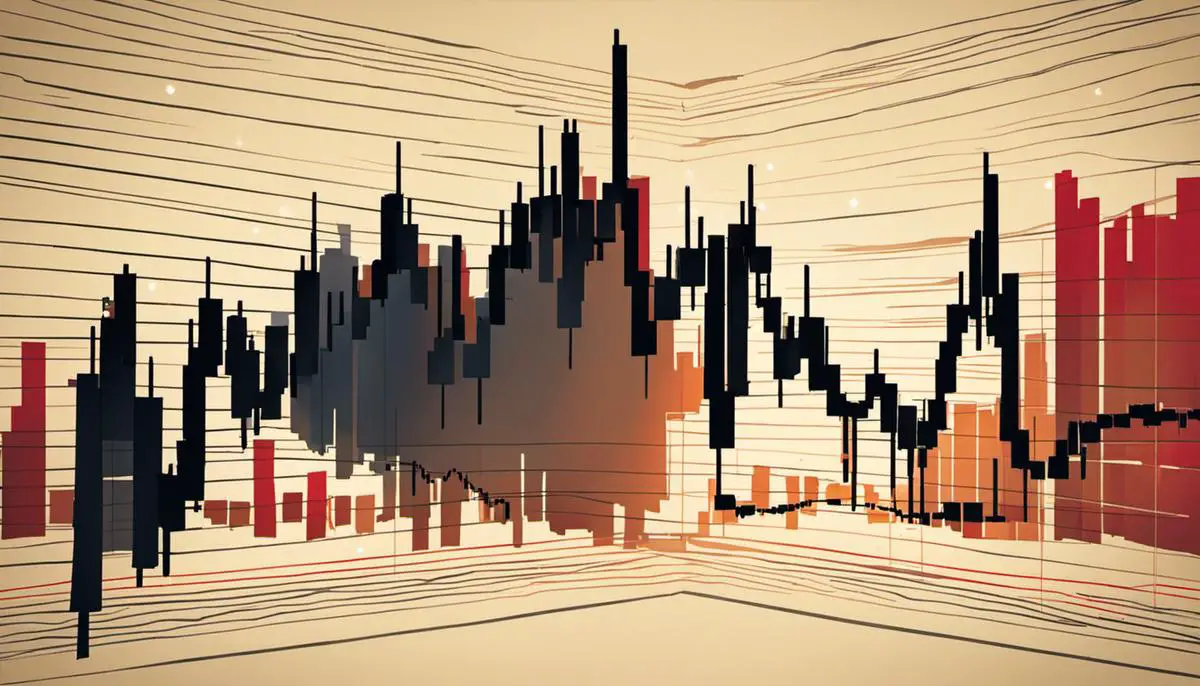
Interpreting Cross Doji
Diving headfirst into the subtle intricacies of the Cross Doji, the most pressing matter to highlight is the compulsion to ascertain the appearance within a suitable context. Understanding the market environments providing the, shall we say, breeding grounds for a Cross Doji allows for both advantageous manoeuvring and adept analysis.
A common breeding ground is the uncharted territory of a new price range – a risky space filled with potential and uncertainty. The emergence of a Cross Doji here signifies that neither bulls nor bears hold the market sway – it’s a draw, and from such instances, astute traders alone can reap the spoils. Heed the market, gauge its temperament, and react accordingly – there lies the keystone sequence.
A different kaleidoscope appears in a trending market, where volatility is a constant visitor. The Cross Doji in this scenario is the indicator for you to buckle up – volatility may soon take a back seat. Traders should dissect their strategies, understanding whether it aligns with a potentially less volatile phase.
Now, let’s delve into the tumultuous world of a sideways market. Amid the labyrinth of tops and bottoms, a Cross Doji emerges as a beacon beckoning a trend’s initiation. Market participants here must assess how convinced they stand on the potential new trend, acting swiftly and smartly, be it preparing for an exciting journey or going “flat” to protect their capital.
An often overlooked, albeit equally potent circumstance findings itself in the tumultuous periods of increased trading volumes. A Cross Doji appearing amidst such frenzy is akin to a stir in the still water; traders often see this as a signal to expect a significant price move or trend change.
A critical part of painting this expansive picture of the Cross Doji centres around the age-old adage: context is king. Each entrant in the push and pull of the marketplace presents with their biases, positions, and expectations – it’s this very mishmash of actors that breathes vitality into the intricacies of the Cross Doji.
From the trenches of new price ranges, the ridges of trending and sideways markets, to the clamour of high trading volumes, understanding the manifestations of Cross Doji in each distinct scenario profoundly enhances decision-making prowess. Savvy application of this knowledge can serve as the catalyst in propelling your trading venture to soaring heights.
However crucial Cross Doji interpretations are, remember: Candlestick patterns are not a foolproof recipe. Develop an analytical view of the terrain, an intuitive understanding of trends and a rigorous eye for detail. Apply such a polished perspective along with sound risk management and voila! You’ll emerge as a formidable player on the trading stage.
No financial labyrinth is insurmountable, provided one turns every corner enlightened with knowledge, and more importantly, the wisdom to apply it. Because in the game of stocks, it’s not about the cards you’re dealt, it’s about how well you play them.
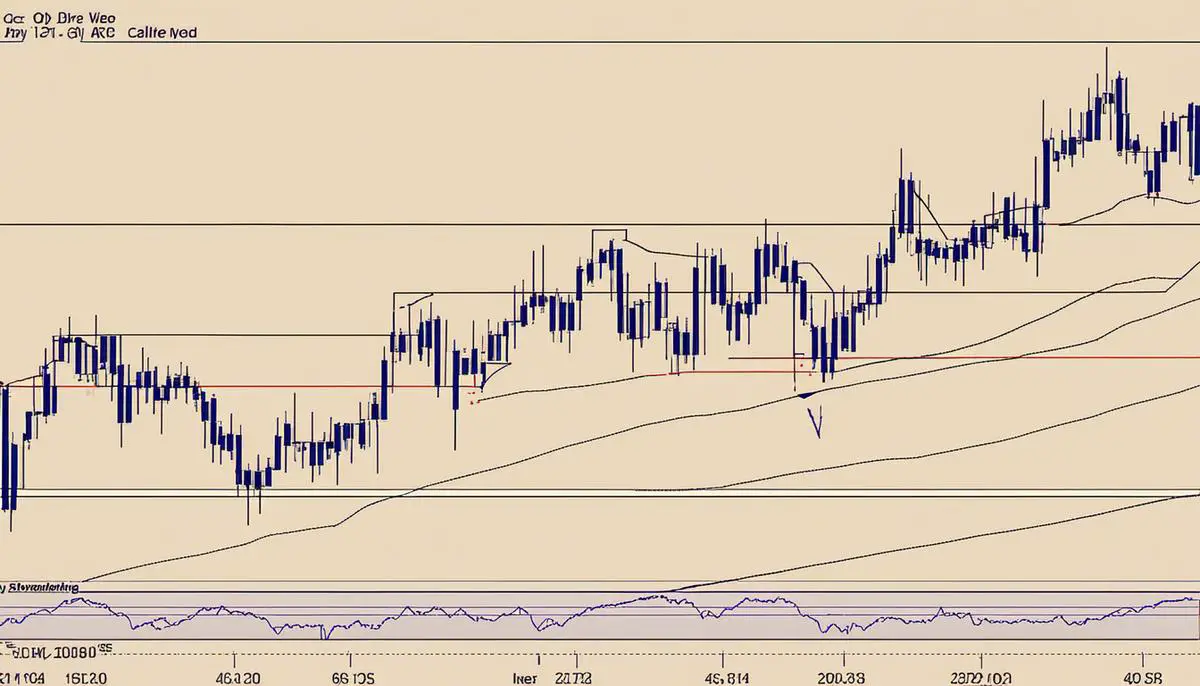
Cross Doji Trading Strategies
The Cross Doji pattern, an invaluable tool for traders globally, becomes even more effective when leveraged within a comprehensive and holistic approach to market analysis. And while the knowledge gap between the understanding and application of this pattern has been bridged significantly, there remains further exploring of this compelling trading strategy.
First, it is key to recognise the context in which the Cross Doji appears. Regardless of whether it surfaces at the peak of an uptrend, or draws attention in a downtrending market, its role differs significantly based on the broader market scenario, making context a paramount factor in effective Cross Doji analysis.
Secondly, a Cross Doji pattern emerging inside a new price range can be seen as a harbinger of potential sideways movement to occur. This is often viewed as a phase of respite, providing both bulls and bears a break from their tug-of-war, as the market settles in for a consolidation episode.
In the landscape of a trending market experiencing high volatility, the significance of a Cross Doji pattern escalates. As this pattern emerges, serving as a symbol of indecisiveness among traders, it can flag potential reversal points, offering lucrative trading opportunities.
Moreover, the appearance of the Cross Doji in a sideways market can also hint at the birth of a fresh trend. It can be viewed as a miniature standoff between buyers and sellers, the victor of which can potentially lead the next market phase.
Traditionally, periods of heightened trading volumes coincide with the arrival of the Cross Doji. This heightened activity augments the importance of this candlestick pattern, making it even more noteworthy for traders.
Beyond market dynamics, human factors such as biases, positions, and anticipations from market participants also cast significant influence on Cross Doji patterns. Traders need to keep their fingers on the pulse of market sentiment to identify perspective shifts or consensus forming amidst market participants.
Nevertheless, despite its potential, profiting from a Cross Doji pattern is not guaranteed. The tool requires careful decision-making and application to be effective. This draws attention to another pivotal reminder – the paramountcy of ongoing learning, honing of analytical skills, and practice in risk management, without application of which successful trading may prove to be a tough nut to crack.
Lastly, while it forms an integral part of technical analysis, the Cross Doji, or any single candlestick pattern for that matter, should not form the sole basis for your trades. Adopting a multifaceted approach that combines fundamental analysis, reading of market sentiment, and understanding of broader economic indicators can pave a more lucrative path for traders.
In conclusion, Cross Doji, a compelling trading tool, should be seen as a part of the larger scheme of market analysis. Incorporating it effectively requires an understanding of the market, its participants and the broader context, combined with analytical acumen, and risk management – a challenge welcomed by every savvy entrepreneur!
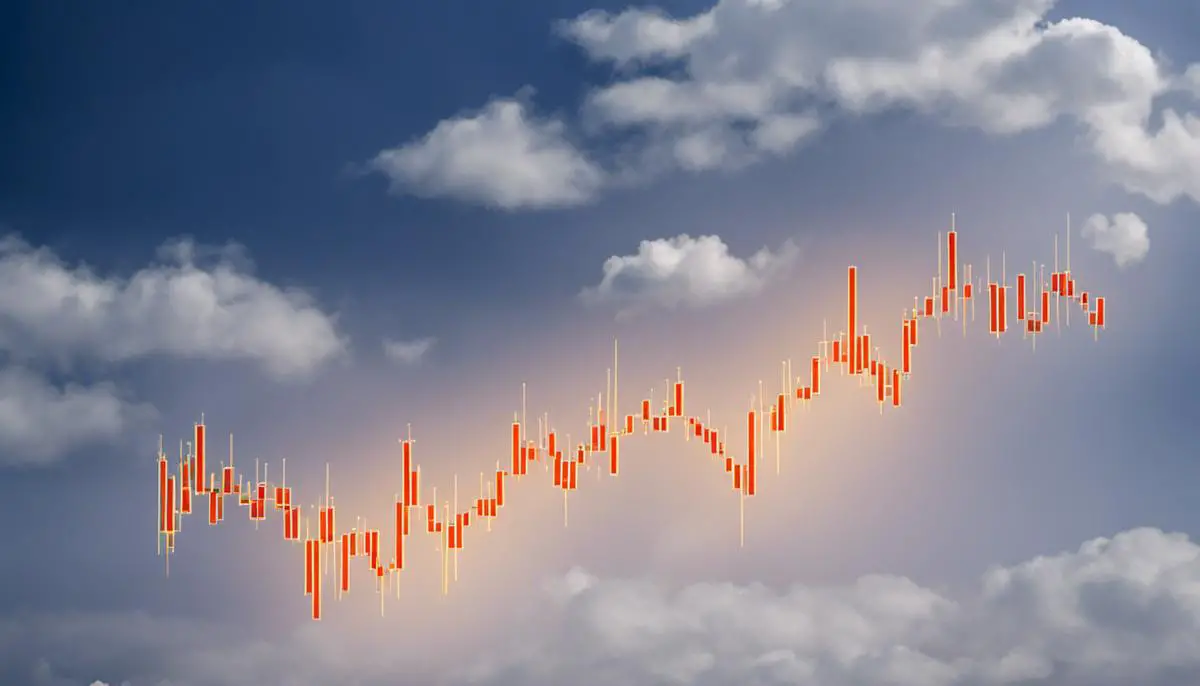
The Risks and Limitations of Cross Doji
The Risks and Limitations Associated with the Cross Doji
To utilize the Cross Doji effectively in trading strategies requires an understanding not only of its potential signals, but also its inherent constraints and limitations. While the Cross Doji represents a clear market equilibrium in the battle between buyers and sellers, comprehensive interpretation of its implications requires a broader contextual understanding.
One of the key limitations is that a single candlestick pattern, such as the Cross Doji, lacks the definitive power to signal either a continuation or reversal of a dominating trend without an understanding of the prevailing trading environment. A Cross Doji appearing at the peak of a volatile uptrend, for instance, may hold drastically different implications than one which forms amid a calmer, range-bound market.
Additionally, the Cross Doji’s hint at a new trend could be misinterpreted if it occurs within a sideways market without any additional supporting factors, adding an element of risk to trading decisions based solely on this pattern. Basing strategies solely on the appearance of a Cross Doji can be a perilous practice if not supported by market sentiment, trading volumes and broader economic indicators.
Through the lenses of behavioural finance, human biases also play a central role in the formation and interpretation of Cross Doji patterns. Market participants’ positions, expectations, and biases can exaggerate or distort the real meaning behind the appearance of a Cross Doji, amplifying the risks if not identified and managed properly.
Increased trading volumes during the formation of a Cross Doji can also change the landscape, adding a layer of complexity to trading decisions. This is because higher volumes can indicate a major transaction by large institutional investors, signalling potential trend changes which need to be considered in addition to the Cross Doji itself.
To mitigate these limitations and craft the optimal strategy, a proactive stance is key. This requires continuous honing of skills in analytical thinking, understanding financial and economic trends, and critical risk management: the pillars of successful trading.
In this vein, it’s crucial to remember that while the Cross Doji can be a profitable tool in trading, it should not be the sole trigger for financial decisions. A judicious trader combines its insights with other analytical tools and factors, such as economic indicators, fundamental analysis and market sentiments to cushion the risks and amplify the rewards in the unpredictable theatre of stock trading.
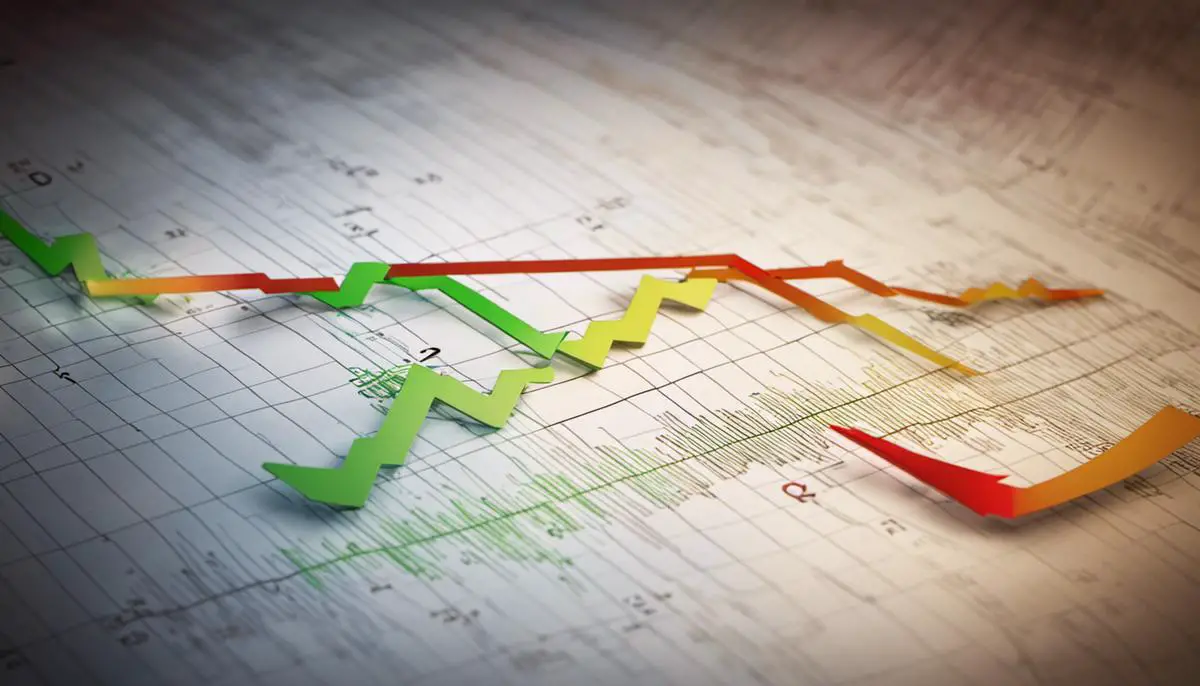
Despite the Cross Doji’s popularity as a potential harbinger of market reversals, it is crucial to recognise that it doesn’t represent a foolproof trading strategy. A solitary pattern cannot substitute comprehensive market analysis, including the evaluation of other technical indicators and market fundamentals. Therefore, while the Cross Doji remains an essential tool in the arsenal of a seasoned trader, it must form part of a broader, more holistic trading strategy that considers a myriad of factors. With a thorough and comprehensive approach, one can navigate the ever-volatile stock market with a better degree of confidence and caution.


